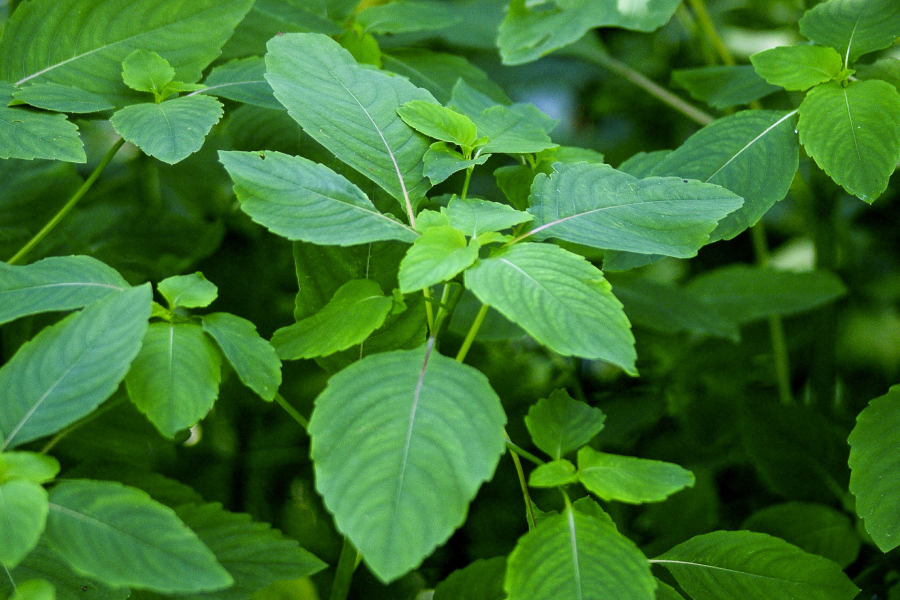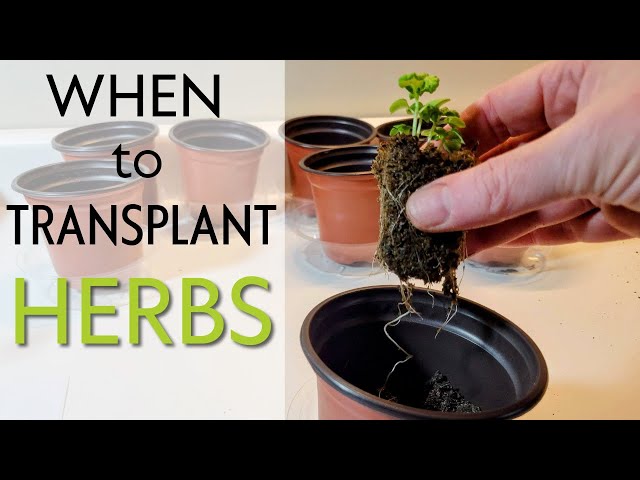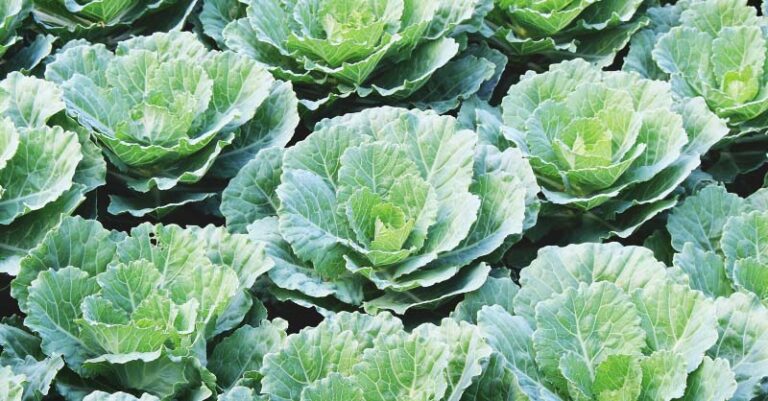How Do You Treat Poison Ivy With Jewelweed: Effective Tips
Imagine this: you’re enjoying a beautiful hike in the woods, taking in the sights and sounds of nature. Then, an unwelcome guest appears on your skin—a red, itchy rash caused by poison ivy.
It’s enough to turn any adventure into a nightmare. What if I told you there’s a natural remedy that could bring you relief? Enter jewelweed, a plant often found growing nearby that holds the secret to soothing that irritating rash.
Curious to know how this simple plant can help you? You’ll discover the straightforward steps to using jewelweed effectively against poison ivy, ensuring your outdoor explorations remain itch-free and enjoyable. Read on to learn how you can make nature work for you in the battle against this pesky plant.

Credit: www.corinnawood.com
Understanding Poison Ivy And Jewelweed
Have you ever found yourself itching uncontrollably after a seemingly innocent walk in the woods? Chances are, you’ve encountered poison ivy. This notorious plant is infamous for causing an irritating rash that can last for days. But did you know that nature offers a remedy right in the same environment? Jewelweed, a common plant often found near poison ivy, has been used for centuries to relieve the discomfort caused by poison ivy exposure. Understanding the relationship between these two plants can be your first step towards natural healing.
What Is Poison Ivy?
Poison ivy is a plant that contains urushiol, an oil responsible for causing itchy rashes upon contact. It’s identifiable by its three-leaf clusters, often with a reddish hue at the base. You may have heard the saying, “Leaves of three, let it be,” which is a helpful reminder to steer clear.
Even brief contact can result in a rash that spreads across the skin. It can be a real nuisance during outdoor activities. Have you ever wondered why a pleasant hike can turn into an itchy nightmare?
Discovering Jewelweed
Jewelweed is a plant that often grows near poison ivy, offering a natural antidote to its effects. With its delicate orange blossoms and succulent stems, it’s easy to spot. The plant is known for its soothing properties, especially when it comes to skin irritations.
Rubbing jewelweed juice on the affected area can help reduce itching and inflammation. This isn’t just folklore; many outdoor enthusiasts swear by its effectiveness. Have you ever tried using nature’s own remedies to counteract a problem?
How Jewelweed Works
Jewelweed contains compounds that counteract the effects of urushiol oil from poison ivy. These compounds can neutralize the irritant and prevent the rash from developing further. The process is simple: crushing the stems releases a juice that can be applied directly to the skin.
Its efficacy lies in its immediate action on the skin, providing relief and preventing the rash from spreading. The next time you’re outdoors, could this plant be your secret weapon against poison ivy?
Personal Experience With Jewelweed
During a camping trip last summer, I stumbled upon a patch of poison ivy. The rash was relentless, but a fellow camper recommended jewelweed. We found some nearby, crushed the stems, and applied the juice. The relief was almost instant, and the rash didn’t spread.
Experiencing the soothing effects firsthand made me a believer in nature’s remedies. Have you ever found a simple solution to a stubborn problem while exploring the outdoors?
Why Use Jewelweed?
Jewelweed offers a natural, chemical-free way to treat poison ivy rashes. It’s easily accessible, especially if you’re already in areas prone to poison ivy. This plant is a testament to how nature provides solutions right where they’re needed.
Consider carrying a small guidebook to identify it on your hikes. You never know when you might need it. Could relying on nature’s remedies be the key to a healthier lifestyle?
Understanding the synergy between poison ivy and jewelweed can transform your outdoor experiences. Embrace the wisdom of nature and let it guide you through life’s little challenges.
Identifying Poison Ivy
Poison ivy is a common plant that causes skin irritation. Identifying it is crucial to avoid its itchy rash. Recognizing its features helps prevent exposure. This guide will assist in spotting poison ivy effectively.
Characteristics Of Poison Ivy Leaves
Poison ivy leaves grow in clusters of three. They have a glossy surface. The edges can be smooth or jagged. Leaf color changes with seasons. In spring, they appear red. Summer brings a green hue. In fall, they turn yellow or orange.
Poison Ivy Stems And Roots
Poison ivy stems are woody and slender. They climb on trees and fences. Roots anchor the plant to surfaces. Stems may have hair-like roots. These help the plant grip tightly.
Recognizing Poison Ivy In Different Seasons
Poison ivy changes its appearance with seasons. In winter, leaves fall off. Stems remain visible. They might look bare. During spring, new leaves emerge. Summer shows full, green growth. Fall displays vibrant colors. Each season presents unique signs.
Common Locations Of Poison Ivy
Poison ivy thrives in various environments. It grows in forests and fields. Roadsides and trails host this plant too. Gardens and yards are not immune. Identify it to avoid contact.
Similar Plants To Avoid Confusion
Other plants resemble poison ivy. Virginia creeper is one example. It has five leaves, not three. Boxelder young leaves can confuse as well. It also has three leaflets. Learn to differentiate them.
Recognizing Jewelweed
Jewelweed is a natural remedy for poison ivy. It grows wild in many areas. Recognizing jewelweed is the first step in using it effectively. This plant is known for its bright orange or yellow flowers. It thrives in moist, shady areas. Understanding its appearance helps in identifying it easily.
Identifying The Leaves
Jewelweed leaves are oval-shaped and have a toothed edge. They are light green and smooth to touch. The undersides are often slightly paler. The leaves grow alternately on the stem. This pattern is a key identification feature.
Spotting The Flowers
The flowers of jewelweed are quite distinctive. They are trumpet-shaped and hang down like pendants. Their colors range from bright orange to yellow. Look for red or orange spots on the petals. These spots are a clear sign it’s jewelweed.
Understanding The Stems
Jewelweed stems are thick and juicy. They have a translucent, watery appearance. When broken, the stem releases a clear, cool liquid. This liquid is the part used for treating poison ivy. It feels soothing on the skin.
Noticing The Growth Habitat
Jewelweed likes wet, shady environments. It often grows near streams, ponds, and in damp woodlands. It can also be found along roadsides and in gardens. Recognizing its preferred habitat helps in locating it.
Natural Remedies For Poison Ivy
Natural remedies offer a gentler approach to treating poison ivy. Jewelweed is a popular choice for soothing the rash. Its anti-inflammatory properties can help reduce swelling and itching. Many people prefer using natural methods to avoid harsh chemicals.
How Jewelweed Helps Treat Poison Ivy
Jewelweed contains compounds that counteract poison ivy’s effects. It helps neutralize the oils that cause irritation. Applying jewelweed directly to the skin can provide relief. It’s a traditional remedy used for generations.
Fresh jewelweed can be crushed to extract its juice. The juice is applied to the affected area. Some people make a paste with jewelweed leaves. This paste can be used on the rash for soothing effects.
Using Jewelweed Soap
Jewelweed soap is available in many natural stores. It combines jewelweed extract with moisturizing ingredients. Washing with jewelweed soap can alleviate symptoms. Regular use can help manage the rash.
Jewelweed Salves And Ointments
Salves made with jewelweed offer concentrated relief. These salves are easy to apply. They provide a protective layer on the skin. Jewelweed ointments can be found in health stores.
Precautions When Using Jewelweed
Always test jewelweed on a small skin area first. Some may experience mild irritation. Consult a healthcare professional if symptoms persist. Natural remedies are not substitutes for medical advice.
Benefits Of Jewelweed
Jewelweed is a natural remedy known for its soothing properties. This plant, often found in moist areas, offers relief from itchy skin caused by poison ivy. Its popularity stems from the various benefits it provides to those dealing with skin irritations.
Natural Anti-inflammatory Properties
Jewelweed contains compounds that reduce skin inflammation. These compounds soothe the skin and lessen redness. This makes it effective for calming irritated areas.
Rich In Antioxidants
The plant is packed with antioxidants. These help protect the skin from damage. Antioxidants also support skin healing, speeding up recovery.
Moisturizing Effect
Jewelweed helps keep the skin hydrated. Its moisturizing properties prevent dryness, maintaining skin softness. This is crucial for healing irritated skin.
Easy To Apply
You can easily use jewelweed by crushing its leaves. This releases its beneficial juices directly onto the skin. Quick and simple application aids faster relief.
Natural And Safe
Jewelweed is a natural treatment option. It is safe for most people to use. Many prefer it over chemical-based solutions for skin issues.
Widely Available
Jewelweed grows in many regions. You can find it in gardens and forests. Its availability makes it a convenient remedy.
Harvesting Jewelweed Safely
Jewelweed is a natural remedy known for soothing poison ivy. To use it effectively, harvesting the plant safely is essential. Careful and responsible collection ensures you have a potent remedy while preserving the plant population for future use.
Identifying Jewelweed In The Wild
Jewelweed often grows near streams and damp areas. Its bright orange or yellow flowers are easy to spot. Look for the plant’s distinct, oval-shaped leaves. These leaves have a slightly serrated edge.
Choosing The Right Time To Harvest
Harvest jewelweed during its peak growth, typically late spring to early summer. The plant is most potent when in full bloom. Always choose a dry day for harvesting to avoid mold.
Using The Right Tools For Harvesting
Use a sharp pair of scissors or garden shears. This tool helps prevent damage to the plant. Always cut the stem above the ground, leaving roots intact.
Protecting Yourself While Harvesting
Wear gloves to avoid skin irritation. Jewelweed can cause a mild rash in some people. Long sleeves and pants are also advisable for protection.
Harvesting Responsibly
Take only what you need to ensure plant regrowth. Leave some flowers and leaves behind. This practice helps the plant spread and thrive.
Storing Jewelweed Post-harvest
After harvesting, rinse the plant thoroughly. Store it in a cool, dry place. Use fresh jewelweed within a few days for best results.
Preparing Jewelweed For Use
Jewelweed effectively treats poison ivy by soothing the skin. Crush its leaves to create a soothing juice. Apply this juice directly to the affected area for relief from itching and irritation.
Preparing Jewelweed for Use When the itch and rash of poison ivy strike, jewelweed can be your natural ally. This vibrant plant, often found growing near poison ivy, has been traditionally used to soothe irritated skin. To harness its healing properties, you need to know how to prepare jewelweed effectively. Let’s dive into some practical methods to make the most of this natural remedy.Making Jewelweed Infusions
Creating a jewelweed infusion is a straightforward process. Start by gathering fresh jewelweed leaves and stems, ensuring they are clean and free of debris. Chop them into small pieces and place them in a pot of boiling water. Allow the mixture to simmer for about 15-20 minutes, then strain the liquid into a clean container. This infusion can be applied directly to the affected area using a clean cloth or cotton pad. Have you ever tried making your own herbal remedies? It can be a rewarding experience!Creating Jewelweed Salves
A jewelweed salve can be a soothing balm for poison ivy rashes. Begin by making a jewelweed infusion as described above. Once you’ve strained the liquid, melt some beeswax in a pan over low heat. Gradually add the jewelweed infusion, stirring continuously until it forms a smooth mixture. Pour the salve into small containers and let it cool before applying it to your skin. This homemade remedy can be stored and used whenever you need relief.Brewing Jewelweed Tea
While jewelweed tea is not for drinking, it serves as an external wash. To make this tea, follow the same steps as for the infusion, using a larger quantity of water. Once brewed and cooled, use the tea as a wash or compress on the rash. It may sound unusual, but sometimes natural remedies offer the most surprising solutions. Have you ever considered using plants for skin relief? By preparing jewelweed in these ways, you can experience its soothing benefits firsthand. Whether it’s a salve or an infusion, the practical steps outlined here empower you to tackle poison ivy naturally.
Credit: www.sciencedirect.com
Applying Jewelweed On Poison Ivy
Poison ivy can be a pesky problem for many. Jewelweed offers natural relief. This plant has been used for centuries. It soothes irritated skin caused by poison ivy. Applying jewelweed is simple and effective. There are two main methods. Direct application and using compresses. Both have their benefits.
Direct Application Techniques
Fresh jewelweed works best. Find the plant in moist areas. Look for its orange flowers. Break the stem gently. A liquid will ooze out. Apply this directly to the rash. Rub it gently over the skin. This soothes the itch quickly. Jewelweed’s sap helps reduce inflammation. It creates a cooling sensation. Repeat this process regularly.
Using Jewelweed Compresses
Compresses are another option. Gather fresh jewelweed leaves. Crush them to release the juice. Place the leaves in a cloth. Wrap them tightly to form a compress. Apply this to the affected area. Leave it on for several minutes. This method provides prolonged relief. It allows the skin to absorb the sap. Jewelweed compresses are easy to make. They offer a natural remedy for poison ivy.
Precautions And Considerations
Treating poison ivy with jewelweed requires careful application to prevent skin irritation. Always test on a small skin area first. Ensure the plant is correctly identified to avoid using harmful plants.
Treating poison ivy with jewelweed is a natural remedy many people swear by, but it’s crucial to understand the precautions and considerations before diving into this alternative treatment. Jewelweed, known for its soothing properties, can be an effective ally in combating the itchiness and discomfort caused by poison ivy. Yet, like any remedy, it’s important to be aware of potential risks and how to use it safely.Understand Jewelweed’s Reaction
Jewelweed is generally safe, but not everyone’s skin reacts the same way. Before applying it to a large area, test a small patch of skin. If your skin shows irritation or redness, discontinue use immediately. Your reaction may vary, and it’s essential to pay attention to your body’s signals.Timing Is Key
Jewelweed is most effective when applied shortly after exposure to poison ivy. The sooner you apply it, the better it can help in neutralizing the oil from the plant. If you wait too long, jewelweed may not provide the relief you’re hoping for.Where To Find Jewelweed
Jewelweed is often found growing in moist, shady areas. You might spot it near streams or in damp woodlands. If you’re not familiar with identifying the plant, consider consulting a local herbalist. Be sure you’re harvesting the right plant to avoid any mishaps or ineffective treatment.Consider Your Allergies
If you have known plant allergies, it’s wise to be cautious with jewelweed. Your skin might react adversely, leading to more discomfort. Consult with a healthcare professional if you’re unsure about potential allergic reactions.Think About Combining Treatments
While jewelweed can be beneficial, it might be helpful to use it alongside other remedies. Some people find relief by combining jewelweed with over-the-counter creams or antihistamines. What combination works best for you? Experiment to find the right balance. Jewelweed has been a trusted remedy for poison ivy for generations. However, safety and effectiveness come from knowing how to use it properly. With these precautions and considerations in mind, you can confidently explore this natural treatment. Have you tried jewelweed, or do you have other remedies that work for you? Share your insights and experiences.
Credit: www.chesapeakebay.net
Additional Home Remedies
Jewelweed offers a natural way to soothe poison ivy irritation. Crush its leaves to release the juice. Apply directly to the affected area for relief.
If you’ve ever found yourself itching madly after a brush with poison ivy, you’re not alone. While jewelweed is a popular natural remedy, there are other home remedies you can try for relief. These methods can complement jewelweed and enhance your healing process. Let’s explore some additional options to soothe that stubborn itch.Oatmeal Baths
An oatmeal bath can be a lifesaver when your skin feels like it’s on fire. Just grind a cup of plain oats into a fine powder and mix it into your warm bathwater. Soak for about 20 minutes, allowing the oatmeal to calm the inflammation and reduce the itchiness.Baking Soda Paste
A simple baking soda paste can work wonders. Mix three teaspoons of baking soda with one teaspoon of water to create a thick paste. Apply it directly to the affected area. This paste can help draw out toxins and reduce itching. Have you tried this before? It might surprise you how effective a basic kitchen ingredient can be!Aloe Vera Gel
Aloe vera isn’t just for sunburns. Its soothing properties can also help calm irritated skin from poison ivy. Apply fresh aloe vera gel directly from the plant, or use store-bought gel if necessary. Keep it in the fridge for an extra cooling effect. It’s a refreshing way to relieve that relentless itch.Apple Cider Vinegar
Apple cider vinegar is known for its antibacterial properties. Dab a bit of it on a cotton ball and gently apply it to the rash. You may feel a slight sting at first, but it’s worth it for the relief it brings. Many people keep a bottle handy for various skin irritations.Cold Compresses
Sometimes, the simplest solutions are the most effective. A cold compress can quickly reduce swelling and itching. Wrap some ice cubes in a clean cloth and press it gently against your skin. This method is especially great for those moments when you need immediate relief. Trying these remedies might offer you a new perspective on managing poison ivy. Have you ever combined different home remedies to tackle persistent skin issues? Your personal experiences could help others find the perfect solution.When To Seek Medical Attention
Jewelweed can soothe poison ivy rashes with its natural compounds. Rub crushed jewelweed leaves on affected areas for relief. Seek medical attention if the rash worsens or spreads beyond the initial contact zone.
Poison ivy can be more than a mild inconvenience, especially if you’re not sure when to seek medical attention. While jewelweed is a popular natural remedy, there are times when professional help is necessary. Being aware of these moments can prevent complications and ensure a swift recovery.Signs Of A Severe Reaction
Not every rash is the same. If you notice intense itching, swelling, or blisters that cover a large area of your body, it might be time to call a doctor. Severe reactions can also include difficulty breathing, which requires immediate medical care.Presence Of Infection
Infections can occur if you scratch the rash too much, breaking the skin. Look out for signs such as pus, yellow scabs, or increasing redness. If you notice these symptoms, it’s crucial to get medical treatment to prevent further issues.Unusual Symptoms
Sometimes, poison ivy can cause unexpected symptoms like fever or headaches. These are not typical and may suggest a more serious condition. Don’t hesitate to consult a healthcare professional if you experience anything out of the ordinary.When Symptoms Persist
If your rash doesn’t improve after a week or worsens despite using jewelweed, seek medical advice. Prolonged symptoms might indicate an allergic reaction that needs stronger medication.Personal Experience
A few summers ago, I brushed against poison ivy during a hike. Initially, I treated it with jewelweed, which worked wonders. However, when my rash spread despite the treatment, I knew it was time to see a doctor. That decision saved me from a more severe reaction.Importance Of Professional Advice
Consulting a healthcare provider can offer peace of mind. They can provide treatments like corticosteroids that are more effective for severe cases. Trust your instincts; if something feels wrong, it’s better to be safe and get an expert opinion. Are you confident in recognizing when a rash needs more than a home remedy? Understanding these signs can help you act quickly and ensure your health isn’t compromised.Frequently Asked Questions
What Is Jewelweed Used For?
Jewelweed is a natural remedy often used to treat skin irritations. It’s particularly effective against poison ivy rashes. The plant contains compounds that can neutralize the itch and inflammation caused by poison ivy. Applying jewelweed sap directly to the affected area can provide quick relief and soothe the skin.
How Does Jewelweed Treat Poison Ivy?
Jewelweed contains saponins, which help counteract the effects of poison ivy. When applied, these compounds reduce itching and inflammation. The plant’s anti-inflammatory properties soothe the skin, offering relief. For best results, crush the jewelweed stem and apply the juice directly to the rash.
Can Jewelweed Prevent Poison Ivy Rash?
Yes, jewelweed can help prevent poison ivy rash if applied immediately. Before the rash develops, apply jewelweed sap to the exposed area. This can neutralize the urushiol oil from poison ivy. Acting quickly increases the effectiveness of jewelweed in preventing rash formation.
Is Jewelweed Safe For Everyone?
Jewelweed is generally safe for most people when used topically. However, some individuals might experience skin irritation. It’s advisable to test a small area first. If irritation occurs, discontinue use. Always consult a healthcare professional if you have concerns or allergies before using any natural remedy.
Conclusion
Jewelweed offers a natural way to treat poison ivy rashes. Its soothing properties can reduce itching and inflammation. Apply the juice from the stem directly on affected areas. This simple method provides relief and speeds up healing. Remember, jewelweed grows near moist areas like streams.
Identifying it can help in emergencies. Always wash the area with soap and water first. This helps prevent further irritation. Stay informed and prepared. Nature provides solutions, and jewelweed is one of them. Enjoy exploring natural remedies safely. Keep learning about plant-based treatments.
Your skin will thank you!







